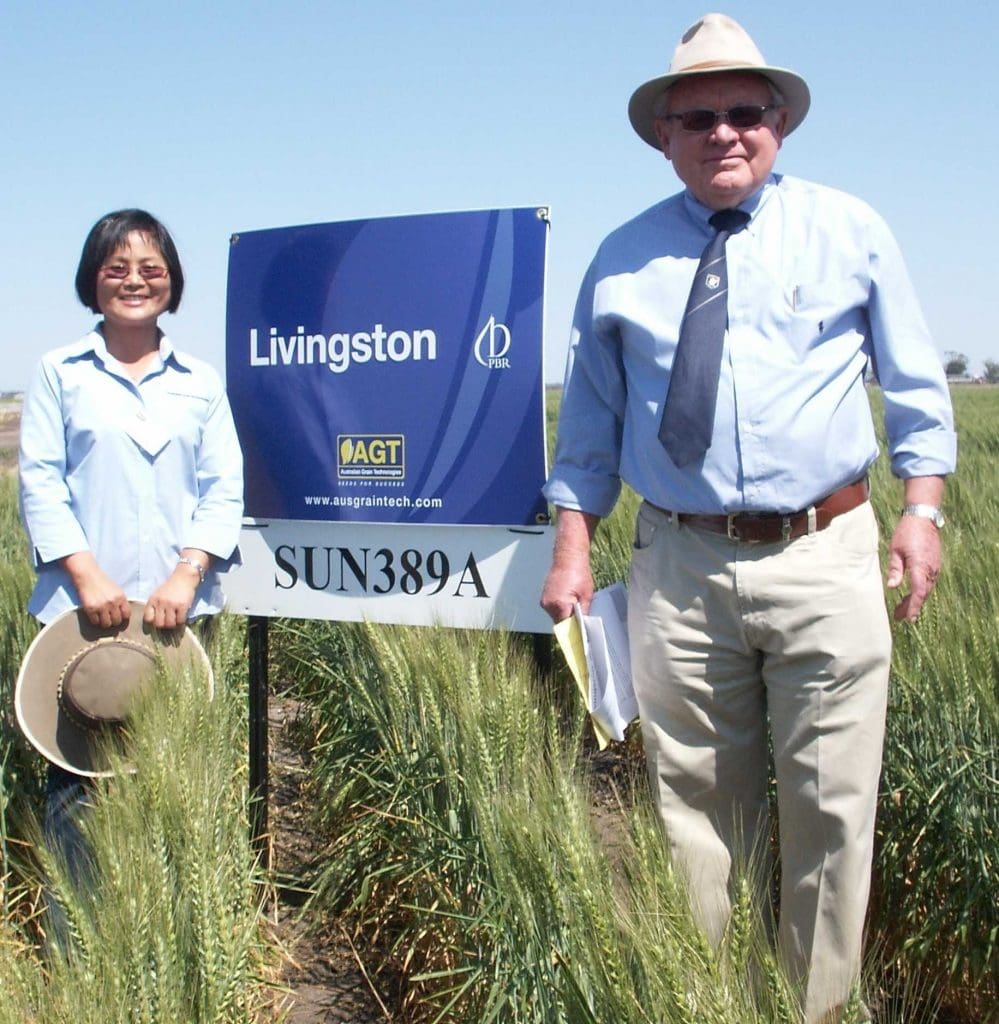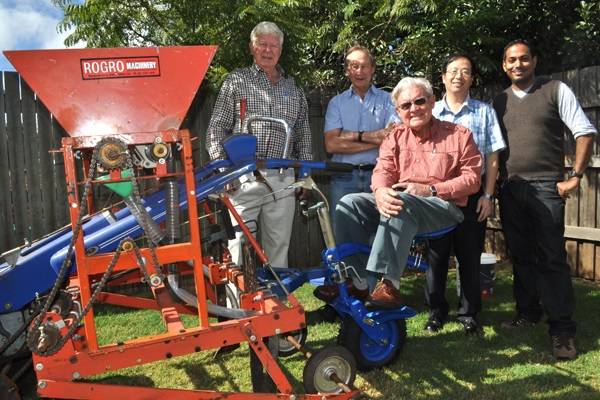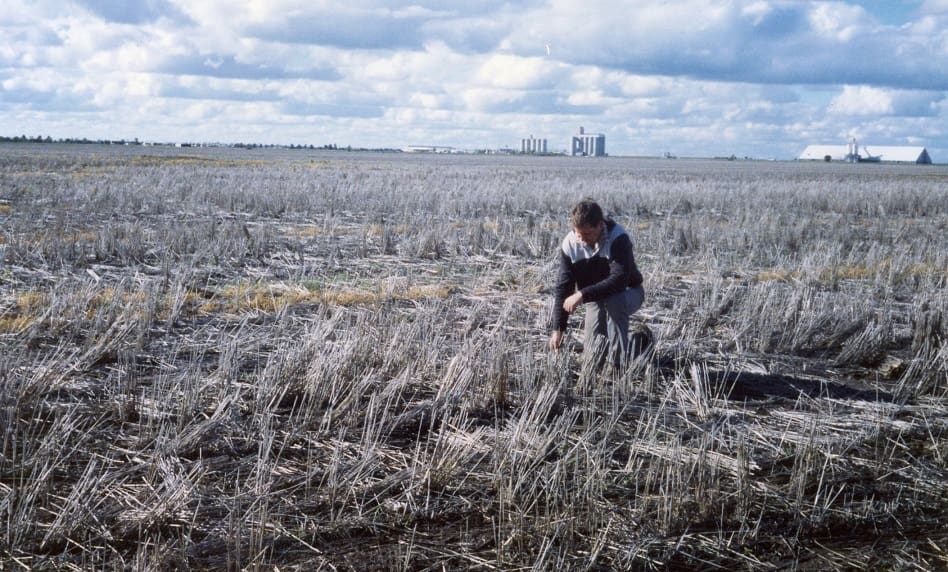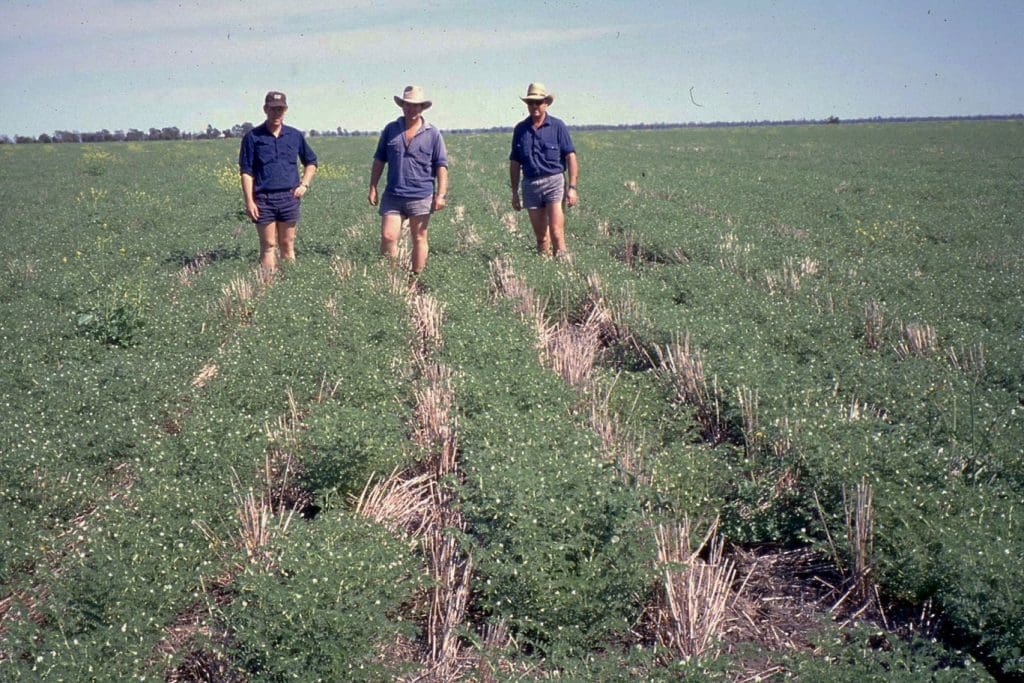ONE of the ‘founding fathers’ of no-till farming, Jeff Esdaile, continues to be a passionate advocate of the low disturbance, stubble retention farming system that has revolutionised Australian crop production over the past few decades.
No-till and minimum till systems have become the ‘norm’ across much of Australia’s farming landscape, largely replacing the traditional, multiple-cultivation systems that were a hallmark of farming in Australia through much of the last century.
Behind the widespread adoption of no-till practices has been the system’s capacity to reduce erosion, improve soil structure, enhance soil moisture retention and increase crop yields.
Mr Esdaile played an integral role in the development and adoption of no-till farming in the 1970s, ‘80s and ‘90s through his work with the University of Sydney’s Plant Breeding Institute (PBI) at Narrabri and Livingston Farm at Moree in north west New South Wales.

University of Sydney’s Plant Breeding Institute plant breeder, Meiqin Lu, with Jeff Esdaile at the launch of the new wheat variety, Livingston, in 2007.
In more recent years as an agricultural consultant at Tamworth, and now at 80 years of age and semi-retired at Scone in the NSW Hunter Valley, he maintains a keen interest in advancing conservation farming, not only in Australia but also in Third World nations around the globe.
After an early career with NSW Agriculture working on phosphorus application to cereal crops in northern NSW, Mr Esdaile joined the University of Sydney in 1967 as the farm manager at the Narrabri PBI where he was first introduced to the concept of no-tillage farming.
In 1976 he was appointed to the 4700-hectare Livingston Farm at Moree which was to become a model farm for the development and adoption of no-till farming.
Under his stewardship, the farming system on Livingston Farm was gradually changed from conventional monoculture grain growing with cultivated fallows to a no-tillage conservation farming system with retention of all residues, major reliance on herbicides for weed control, and timely seeding of crops into moist soil with press wheel drills.
It also included the adoption of rotations with alternate winter cereals, winter and summer pulses, summer cereals, oilseeds, and forage crops, and the use of sheep to help control weeds on crop stubbles, greatly reducing herbicide usage and increasing profits.
“A new system was seen as necessary to minimise soil erosion and to increase the reliability and productivity of crops,” Mr Esdaile said.
“The basis for such a system at Livingston Farm was, we reasoned, the retention of the full residue of the previous crop, so that soil moisture would be available near the surface for establishing a winter crop at the optimum time in late April to late May in most years.
“This aim sounded simple but, at both the research and farm management levels, it involved considerable trial and error, embracing everything from developing specialised seed drills, to controlling weeds with herbicides during the fallow period and spreading the residues from the harvester evenly on the soil surface.”
The pioneering no-till work on Livingston Farm helped drive transformational change throughout the broadacre farming sector across the north west slopes and plains of NSW.
By 2007 Mr Esdaile estimated around 70 to 80 per cent of the cropland in the region was farmed using conservation farming techniques and 50pc was no-tilled.
Today, practically all the cropping land of the region is farmed using conservation farming techniques and 90pc is no-tilled.
Mr Esdaile said conservation farming was continually evolving and faced several challenges, but he was optimistic farmers would continue to adapt and address the issues that emerged.
One of the main threats to the herbicide-reliant system of farming is the increase in weeds developing resistance to key herbicides, in particular glyphosate.
“New pesticides will be found as well as new uses for older products. Unfortunately, some of the ‘old guard’ chemicals may disappear or be severely restricted and we must show the community that we are responsible users of pesticides in order to keep these products as part of our arsenal,” he said.
Mr Esdaile also pointed to advances in technology and machinery that would ensure the ongoing capacity of no-till to meet the latest needs.
“Seeder development will continue. New inventions and innovations by farmers, manufacturers, research workers, and the innovators of this world will result in better and more reliable seed drills,” he said.
“Improved spraying technology will become more evident, with units being able to operate at higher speeds under a wider range of environmental conditions. Water rates will drop and airfoil booms, precision sprayers, and weed-sensing sprayers will be developed further. This will ultimately be translated into lower rates of pesticides being used.”
Mr Esdaile said the diversification of the cropping system and the rotating of crops were essential elements of a successful no-till farming system.
He said while a monoculture system of cropping was often initially profitable, pests, diseases, and weeds specific to that crop species would build up on the residues and in the soil.
“This pressure will sooner or later lead to decreased profitability of the crop species and it becomes more risky to grow it. The solution is to move to a rotation, so that the next crop is planted into a soil with a completely different spectrum of biological constraints,” he said.
“For successful conservation farming, farmers should rotate between broadleaf crops and cereal crops, leguminous and non-leguminous crops, and also summer and winter crops. This greatly lessens the risk of increasing the biological constraints in the farming system.
“Rotational strategies utilising pulse crops, bio-fumigation, pastures and grazing animals, alternate cereal types and oilseeds will become more important as a means of weed, insect, fertility, and disease control.”
Mr Esdaile said to ensure no-till farming’s future and to meet the ongoing challenges, the farming sector needed to:
- Upgrade spraying skills of many farmers, along with knowledge and identification of weeds, herbicides and their action, and correct formulations of herbicides to do the best job.
- Reduce the shift to ‘harder to kill’ weeds including perennials, and weeds resistant to some herbicide groups. Continue development of resistant varieties and rotational strategies to control residue borne plant disease. Develop residue clearance of seed drills. Is there a unit which will handle wet soils, dry soils, heavy residue, sticky soils and obstacles and achieve a good result every time?
- Improve nitrogen application systems in no-tillage. How can we efficiently get the N near the plant, without sacrificing soil moisture and residue cover under a whole range of conditions?
- Manage field fauna such as mice, as they have habitat and food most of the year.
- Avoid the need for post-harvest tillage for the control of over wintering pupae of some insects. Are there alternative ways?
- Convince urban dwellers and media people that no-tillage is environmentally friendly. If not, this may translate into pressure on farmers by way of regulation and other measures.

In addition to his no-till work in Australia, Jeff Esdaile (pictured, centre, in 2013 with engineering colleagues) has been instrumental in helping develop simple, affordable two-wheel tractors and seeding equipment for Third World countries.
* Jeff Esdaile was awarded an AM in 2006 for his services to the environment, and sustainable farming practice in Australia.
He, along with others, is currently compiling material for a short history of conservation farming in north west NSW.



Hello Jeff. Great to read your positive comments about Aussie Ag. Its a shame that many of the excellent agricultural practises and messages are being over-shadowed by political ineptness and a number of ill-informed activists.
We have been trying for years to get a new engine prototype made that will make farmers self-sufficient in cheap fuel and fertiliser, and will reduce CO2 by up to 30%. We can’t afford to make it, and don’t want to go overseas, so we are looking for investors who will lend money to CSIRO to make and commercialise it, to be repaid with interest after commercialising. It is supported by an ex Aust Chief Scientist and numerous others. Government approaches have been a waste of time. Any suggestions?
Jeff, it is good to see that you are still pushing the barrow of the best method of farming so far in spite of emerging threats . One method of weed control you didn’t mention was allelopathy – it is under estimated.